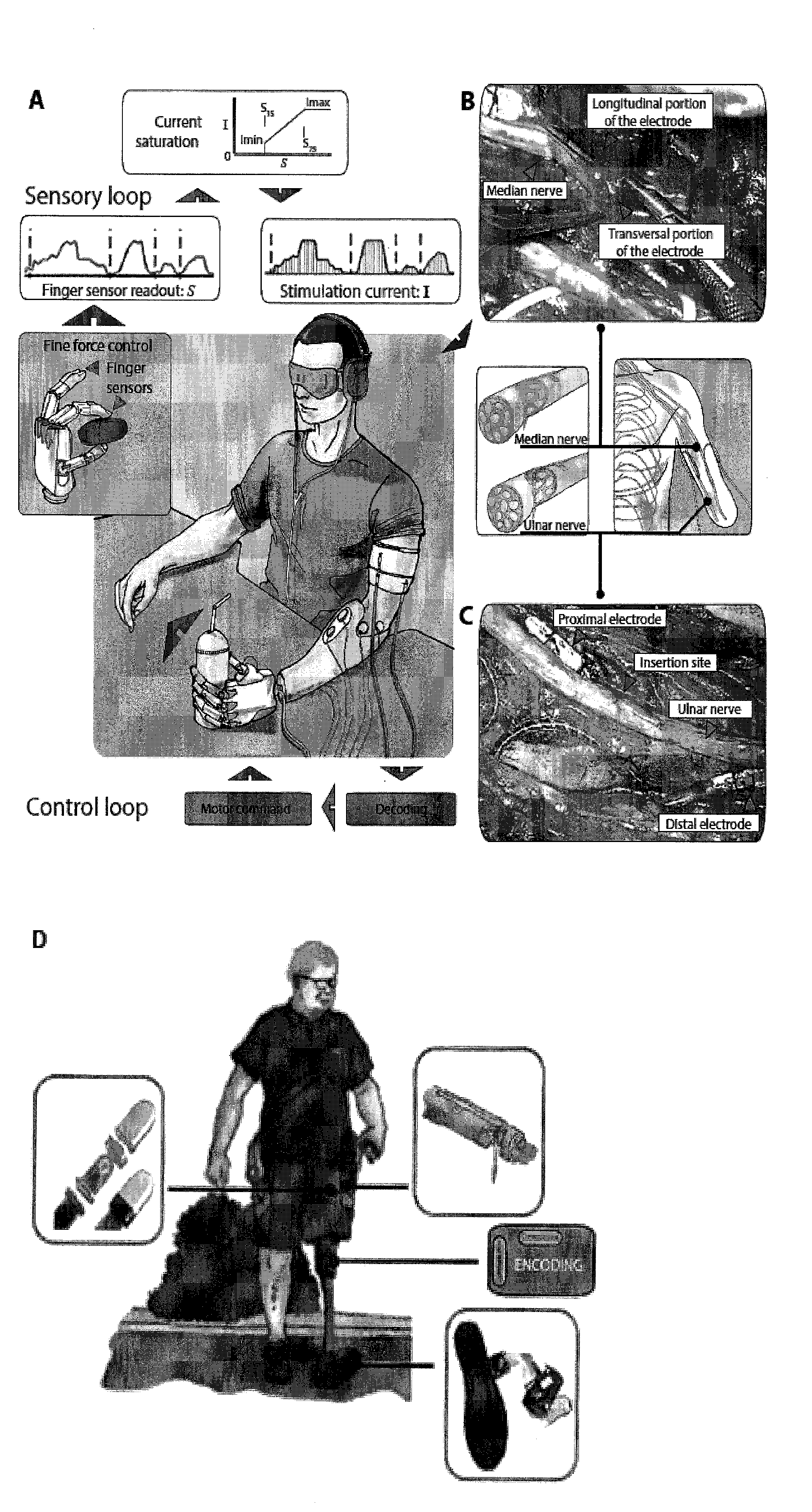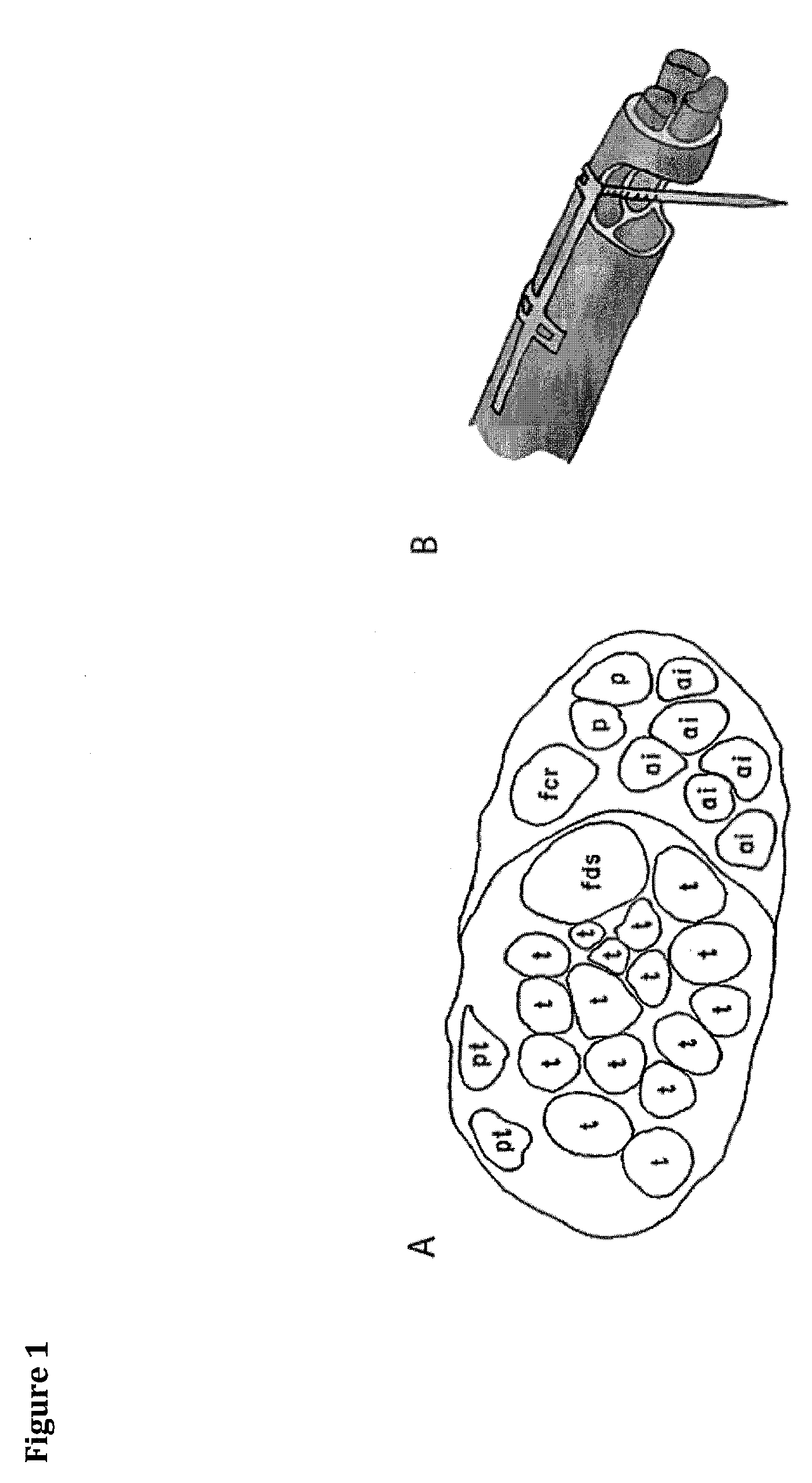Bidirectional Limb Neuro-Prosthesis
a neuroprosthesis and bidirectional technology, applied in the field of limb neuroprosthesis, can solve the problems of difficult real-time bidirectional control, physical debilitation and often distress, and depriving the person of the most immediate and important source of tactile sensing,
- Summary
- Abstract
- Description
- Claims
- Application Information
AI Technical Summary
Benefits of technology
Problems solved by technology
Method used
Image
Examples
Embodiment Construction
[0043]The invention will be better understood in the following text, in a detailed description and with non-limiting examples.
[0044]FIG. 3 illustrates the way the system controls the motion of prosthetic robotic limb and restores tactile and proprioceptive sensations in amputees using force / pressure / position / angular sensors from the finger / fingertips / palm / joints / foot of a prosthetic robotic limb.
[0045]The system is constituted by a robotic limb with embedded sensors or provided with a sensorized glove (or sock), a superficial / implantable stimulator, EMG electrodes mounted in a socket or inserted in the amputee remnant muscles, a signal conditioner and multichannel intrafascicular electrodes. The robotic limb must be connectable to the socket.
[0046]A microprocessor, cable / wireless connected to the robotic limb and to the stimulator, handles the acquisition of the EMG / ENG signals and uses them for the control of the robotic limb. Furthermore, this device reads the signals from the pre...
PUM
 Login to View More
Login to View More Abstract
Description
Claims
Application Information
 Login to View More
Login to View More - R&D
- Intellectual Property
- Life Sciences
- Materials
- Tech Scout
- Unparalleled Data Quality
- Higher Quality Content
- 60% Fewer Hallucinations
Browse by: Latest US Patents, China's latest patents, Technical Efficacy Thesaurus, Application Domain, Technology Topic, Popular Technical Reports.
© 2025 PatSnap. All rights reserved.Legal|Privacy policy|Modern Slavery Act Transparency Statement|Sitemap|About US| Contact US: help@patsnap.com



